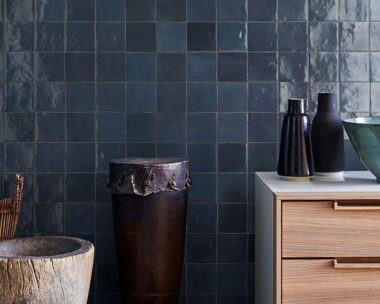Ten years ago, when I planted my garden, I was vertically challenged. No, not short, but unable to make decisions about how tall everything should be. It’s often a problem when you’re starting a garden, so my advice: err on the side of caution.
Height
Every time I look at our property from the hill above us, I regret planting palms. Not that I don’t like them – they’re fabulous – but they would be much more fabulous if they were shorter, or the house was taller.
Happily dug into volcanic soil with more than enough sun and water, the palms – bangalows, queens and dypsis – have left the house for dead.
Fortunately, I don’t notice it when I’m actually close to the house, unless I happen to be walking around with my head leaned back. But it makes me very much aware that thinking about planting in terms of height is absolutely elementary to good design. Such a shame I didn’t know that sooner.

An obelisk or “tuteur” is a speedy way to add height to a garden.
To get a grip on height, think about levels in terms of how they relate to the adult human body, which affects how they are viewed and experienced. Anything below knee height is viewed from above, waist-high elements are seen at an angle and form a screen, partly blocking views of anything immediately behind them. At shoulder and head height, closely planted tall shrubs, hedging or high screens will completelyblock a view. And structures above head height, for example an excess of very tall palms, can create a sense of seclusion or the feeling that there is something far too large right above your head.
But coming back down to earth, a more common problem for gardeners is to create height in their garden design. Young gardens tend to be low, and believe me, banging in the odd queen palm is not the best way to solve the problem.

Look for available vertical surfaces – most houses have at least one face that can be planted against.
Verticals
A garden with variations in height is always more interesting than one that’s behaving like a shagpile carpet. Start by taking a long look at the available vertical surfaces. Most houses have at least one face that can be planted against, and most gardens have a wall or fence around the outside. If your place has no wall or fence, build one, even if it’s only little. It’ll immediately provide two more vertical planes to grow plants against, and add height and structure to your landscape.
Obelisks
A border full of low shrubs and perennials can benefit from the placement of an obelisk or tuteur (lovely French word to show off with) made from metal, copper, bamboo, stone or timber. You can either plant something specifically to grow up the structure, or wait for the existing plants to accommodate it by growing around, against and through it. To make sure it looks like a work of art rather than something to hold your tomatoes up, choose one with a decorative finial at the top for a touch of class. These structures are great attention grabbers in the garden and even more so if you position three of them together. But don’t be tempted to plant, for example, ivy or your tuteur will tur into a topiary and won’t provide the impact it does when its bones are showing.

Where no vertical plane exists, even a piece of trellis will provide the opportunity to create height.
Pergolas
Should you want something a bit more solid and permanent, a pergola is one of the quickest and easiest ways to create a height differential. And don’t panic – we’re not talking something that’ll require an architect and resource consent here. To my way of thinking, four uprights and four cross bars constitute a pergola and, depending on how smart you want it to be, can be erected by an amateur in an afternoon. That’s using quick set concrete, of course.
Alternatively, you can buy a simple, ready-made pergola from the hardware store, or a flash, stylish one from a design shop. Either way, the structure will give the garden a focal
point and climbing plants will lift the eye, especially when they’re in flower.
You’ll need to decide whether you want your pergola covered in greenery all year round, or whether a deciduous climber will allow sun into the space in the winter. Can’t decide? Happily, you’re allowed both – the evergreen will cover for the deciduous plant in the winter.
Plants
Many narrow forms of trees, shrubs and perennials provide the same vertical look as structures. Placed on its own, a single narrow plant looks like an exclamation point in a design and is effective as
a corner anchor of a planting combination. Two plants give a formal appearance and are useful to mark an entranceway, as when they flank a doorway, and for everything else, three or five create an attractive grouping.
If you have an established garden which is still not quite right in the height department, something as simple as a dove coat, a bird table or a flag on a pole may solve the issue without breaking the bank or your back.




